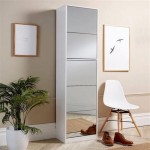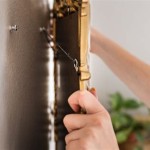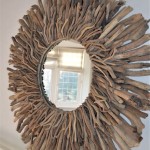Multi-Pane Mirrors: Design, Functionality, and Applications
Multi-pane mirrors, characterized by their construction from multiple individual mirror segments arranged within a single frame, represent a significant departure from traditional single-sheet mirrors. This design approach offers distinct aesthetic and functional advantages, making them increasingly popular in interior design, artistic installations, and various technological applications. The arrangement of panes can range from simple linear divisions to complex geometric patterns, allowing for a high degree of customization and design flexibility. Understanding the nuances of multi-pane mirror design, construction, and applications is crucial for both consumers and professionals looking to leverage their unique properties.
The aesthetic appeal of multi-pane mirrors stems from their ability to manipulate light and reflection in unconventional ways. The individual panes, often separated by thin frames or bevels, create subtle distortions and variations in the reflected image. This breaks up the monotony of a flat, uniform reflection, introducing visual interest and depth to a space. The way light interacts with the edges and surfaces of each pane contributes to a dynamic play of shadows and highlights, enhancing the overall ambiance of a room. Furthermore, the segmented design can complement various interior design styles, from modern and minimalist to traditional and ornate, depending on the specific configuration and framing materials.
Beyond aesthetics, multi-pane mirrors can also serve practical purposes. Their modular construction allows for greater design flexibility in terms of size and shape, making them suitable for spaces where a single large mirror might be impractical. They can be easily adapted to fit irregular wall shapes or incorporated into custom furniture designs. Moreover, the segmented nature of the mirror can reduce the risk of shattering in case of impact compared to a large single-pane mirror. If one pane is damaged, it can often be replaced individually without requiring the replacement of the entire mirror assembly.
Design Considerations for Multi-Pane Mirrors
The design of a multi-pane mirror involves a careful consideration of several factors, including the size and shape of the individual panes, the arrangement of the panes within the frame, the type of framing material used, and the overall style and aesthetic goals. The size and shape of the panes will significantly impact the visual effect of the mirror. Smaller panes tend to create a more fragmented and dynamic reflection, while larger panes offer a cleaner and more unified look. The shape of the panes can also vary, ranging from squares and rectangles to more complex geometric forms, adding further visual interest.
The arrangement of the panes is another critical design element. Symmetrical arrangements tend to create a sense of balance and order, while asymmetrical arrangements can introduce a more dynamic and contemporary feel. The spacing between the panes also plays a role, with wider gaps creating a more pronounced separation and narrower gaps resulting in a more cohesive appearance. The overall dimensions of the mirror must also be carefully considered to ensure that it is proportionate to the space in which it will be placed. Overly large mirrors can overwhelm a small room, while undersized mirrors may get lost in a larger space.
The framing material used in a multi-pane mirror is crucial for both aesthetic and structural reasons. The frame provides structural support for the individual panes and also contributes to the overall style of the mirror. Common framing materials include wood, metal, and composite materials. Wood frames can be stained or painted to match the surrounding decor, while metal frames offer a more modern and industrial look. The type of frame used will also influence the durability and longevity of the mirror. High-quality framing materials can help to protect the panes from damage and ensure that the mirror remains in good condition for many years.
The selection of the mirror glass itself is another important consideration. Different types of glass can offer varying levels of reflectivity, clarity, and tint. Clear glass provides a neutral reflection, while tinted glass can add warmth or coolness to the reflected image. The thickness of the glass will also affect its durability and resistance to breakage. Thicker glass is generally more resistant to damage than thinner glass. The surface finish of the glass can also vary, with some mirrors featuring a beveled edge for added visual appeal.
Functional Advantages of Multi-Pane Mirrors
Beyond their aesthetic appeal, multi-pane mirrors offer several functional advantages over traditional single-sheet mirrors. One key advantage is their adaptability to irregular spaces. Because they are constructed from multiple smaller panes, they can be more easily adapted to fit around corners, curves, or other architectural features. This makes them ideal for use in bathrooms, hallways, and other areas where space is limited or irregularly shaped. The modular design also allows for greater flexibility in terms of size and shape. Multi-pane mirrors can be customized to fit specific needs and requirements, making them a versatile design element for any room.
Another functional advantage of multi-pane mirrors is their increased safety. Because they are made from multiple smaller panes, they are less likely to shatter completely in the event of an impact. If one pane is broken, it is less likely to cause serious injury compared to a large single-sheet mirror. The individual panes are often held in place by a frame or backing, which further reduces the risk of shattering. This makes multi-pane mirrors a safer option for homes with children or pets.
The segmented construction of multi-pane mirrors also facilitates easier maintenance and repair. If one pane is damaged, it can typically be replaced individually without requiring the replacement of the entire mirror. This can save time and money compared to replacing a large single-sheet mirror. The frame can also be cleaned and maintained separately from the mirror panes, making it easier to keep the mirror looking its best.
Furthermore, multi-pane mirrors can contribute to energy efficiency in certain applications. By strategically placing them to reflect natural light, they can help to brighten a room and reduce the need for artificial lighting. This can lead to lower energy consumption and cost savings. The reflective surfaces of the mirror amplify the available light, making the room feel brighter and more spacious. This is particularly beneficial in rooms with limited natural light.
Applications of Multi-Pane Mirrors Across Various Sectors
Multi-pane mirrors find applications in a wide range of sectors, from residential and commercial interior design to artistic installations and specialized technological applications. In residential settings, they are commonly used in bathrooms, bedrooms, and living rooms to enhance the aesthetic appeal and functionality of the space. They can be used as decorative accents, focal points, or functional mirrors for grooming and dressing.
In commercial settings, multi-pane mirrors are often used in retail stores, restaurants, and hotels to create a more inviting and visually appealing atmosphere. They can be used to highlight merchandise, create a sense of spaciousness, or add a touch of elegance to the decor. The ability to customize the size and shape of the mirrors makes them ideal for fitting specific design requirements and branding strategies.
Artists and designers often use multi-pane mirrors in installations to create unique and immersive experiences. The fragmented reflections and dynamic interplay of light and shadow can be used to create a sense of depth, movement, and disorientation. These installations can range from small-scale gallery pieces to large-scale public art projects. The versatility of multi-pane mirrors allows artists to explore a wide range of creative possibilities.
Beyond aesthetic and artistic applications, multi-pane mirrors are also used in specialized technological applications. For example, they are used in optical instruments, such as telescopes and microscopes, to manipulate and focus light. The precise alignment and surface quality of the individual panes are critical for achieving optimal performance in these applications. They are also used in some solar energy systems to concentrate sunlight onto a receiver, increasing the efficiency of energy generation.
The ongoing advancements in manufacturing techniques and materials are continually expanding the possibilities for multi-pane mirror design and applications. New types of glass, framing materials, and assembly methods are being developed, leading to more durable, aesthetically pleasing, and functionally versatile mirrors. As a result, multi-pane mirrors are expected to continue to play an increasingly important role in interior design, art, and technology in the years to come.

Large Multipanel Mirror To Transform Your Room Knockoffdecor Com

Eagan Large Multipanel Wall Mirror 44 X 55 Pottery Barn

French Brass Multi Panel Mirror Above A Whitewashed Antique Credea Flanked By Two Vintage Bras Dining Wall Decor Room Design

Multi Panel Mirror Look 4 Less And Steals Deals

Wooden 20 Pane Leaner Mirror 40x67 In Kirklands Home

Metal Window Pane Inspired Wall Mirror Gold Cosmoliving By Cosmopolitan Target

Multi Panel Mirror Look 4 Less And Steals Deals
:max_bytes(150000):strip_icc()/bloomingdiyer-372b1cae2a6c43af917f3bea506c11da.jpg?strip=all)
20 Diy Mirror Frame Ideas To Inspire Your Next Project

Eagan Large Multipanel Wall Mirror 44 X 55 Living Room Design Decor Interior Styles Bunk Bed With Desk

Farmhouse Mirror 48 X 24 Rustic Multi Pane








